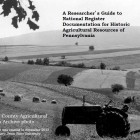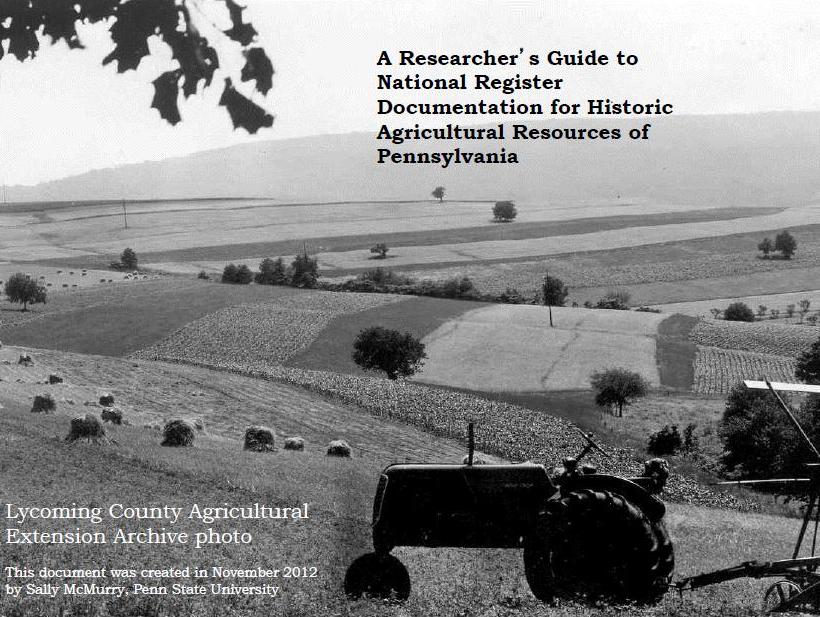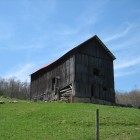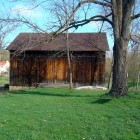 The Pennsylvania Agricultural History Project involved a unique partnership among the Pennsylvania Historical and Museum Commission, the Pennsylvania Department of Transportation, and the Pennsylvania State University with funding from the Federal Highway Administration and the federal Preserve America program. An outcome of the project is a comprehensive website that addresses the scope and character of Pennsylvania’s agricultural resources. Research for the project began in 2001. We are proud to release the culmination of this 12+ year partnership on our website at: http://phmc.info/aghistory.
The Pennsylvania Agricultural History Project involved a unique partnership among the Pennsylvania Historical and Museum Commission, the Pennsylvania Department of Transportation, and the Pennsylvania State University with funding from the Federal Highway Administration and the federal Preserve America program. An outcome of the project is a comprehensive website that addresses the scope and character of Pennsylvania’s agricultural resources. Research for the project began in 2001. We are proud to release the culmination of this 12+ year partnership on our website at: http://phmc.info/aghistory.
The website provides guidance on how to nominate historic agricultural properties to the National Register of Historic Places. The National Register of Historic Places provides a standard and processes for determining the significance of historic agricultural properties. The author of much of the website’s content, Sally McMurry, Professor of History at The Pennsylvania State University, noted that “Development is putting prime farmland under pressure throughout the state; interest is rising in farmland preservation and heritage tourism; and many rural community planners and historical organizations are looking for guidance on how to understand and protect their historic barns, farmhouses, outbuildings, archaeological resources, and farm landscapes.” Due to these factors, our office and our partners felt it was important to create a comprehensive resource that offered a deeply researched and authoritative standard for evaluating the historical and archaeological significance of Pennsylvania’s agricultural resources. The effort resulted in a monumental statewide National Register Multiple Property Documentation Form (MPDF, aka “context”). The official title for the context is “Agricultural Resources of Pennsylvania, 1700-1960.”
The website includes a Researcher’s Guide to help document historic agricultural resources for the National Register. The context identifies three Property Types: farm, farmstead, and historic agricultural district. The Researcher’s Guide offers step-by-step guidance on assembling documentation for each property type. To also help structure your field documentation an Agricultural History Project Survey Form is available on the website. The agricultural survey form is not intended to take the place of the Pennsylvania Historic Resource Survey Form but should be used as a checklist to hone in on important landscape features and agricultural buildings.
To date, a couple of historic agricultural properties have been successfully listed in the National Register under the ‘Agricultural Resources of Pennsylvania’ context. These nominations can be viewed using the Cultural Resources Geographic Information System (CRGIS) http://crgis.state.pa.us. After the login, ‘Ask ReGIS’ to find the McClelland-Grimes Farm in Greene County, key number 155221. The McClelland-Grimes farm meets the Registration Requirements for the property type “farm” under Criterion A* in the area of agriculture for its association with the development of agriculture in the “Southwestern Pennsylvania Diversified Agriculture and Sheep Raising” Historic Agricultural Region for three specific periods of agricultural development: 1850-1890; 1890-1930; and 1930-1960. *Criterion A: “Property is Associated with events that have made a significant contribution to the broad patterns of our history.” The National Park Service’s Bulletin: How to Apply the National Register Criteria for Evaluation.
Another historic agricultural property recently listed in the National Register is the Schrot, Joseph F. and Anna B. Farm (Ask ReGIS key number 140688). Listed in 2011, the Schrot Farm is located in Clearfield County in the “Allegheny Mountains Part-Time and General Farming” Historic Agricultural Region. The Schrot Farm conveys the type of subsistence farming that was typical for the region and became common in twentieth-century Lawrence Township. The buildings and landscape features represent a small, diversified, subsistence farm c.1915, the year the expansion of the house was completed. The farm’s products, buildings, lack of mechanization, and labor patterns match the standards for the region.
Both the McClelland-Grimes Farm and the Schrot Farm are featured in the PHMC’s exhibit at the 2013 Farm Show, taking place January 5-12 at the Farm Show Complex in Harrisburg. The exhibit will unveil the Pennsylvania Agricultural History Project. Visitors to the exhibit will receive a stylized postcard of the Historic Agricultural Regions. For further information on the Pennsylvania Agricultural History Project, please visit http://phmc.info/aghistory.



LOOKING FOR INFO ON ROOT CELLARS. WE HAVE ONE THAT IS IN VERY GOOD SHAPE ON OUR PROPERTY IT IS SIMILAR TO THE PHILIP ERPFF HOUSE PHOTO ON YOUR SITE. CAN YOU HELP OR POINT ME IN A DIRECTION. WE ARE CONSIDERING ALLOWING SCOUTS TO USE IT AS EAGLE PROJECT AND WOULD LIKE TO FIND SOME HISTORY. I COULD SENT PHOTOS IF YOU LIKE. IT IS LOCATED ON AMERICAN LEGION POST 781 PROPERTY IN MT TOP PA
THANKS
LEN BIEL